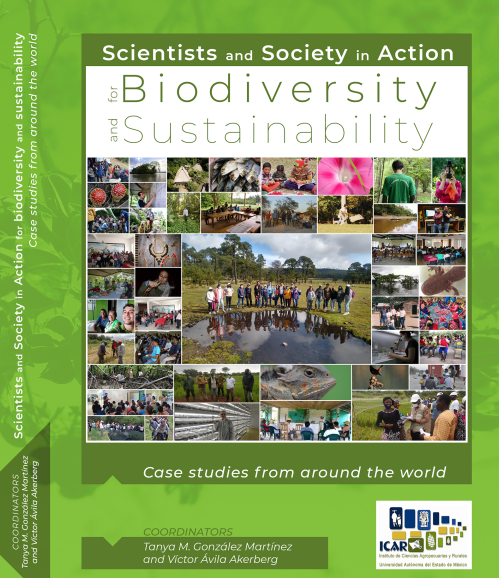Ver ítem
- xmlui.general.dspace_homeCentros Regionales y EEAsCentro Regional Patagonia SurEEA EsquelPartes de librosxmlui.ArtifactBrowser.ItemViewer.trail
Willows in Patagonia: the challenge of understanding and controlling invasions
Resumen
Exotic willows are widely spread throughout Patagonia due to their vegetative multiplication, rapid growth, and ease for establishing themselves in environments with fluctuating hydric regimes, so they most commonly overgrow in riverside environments and wetlands. We identified exotic willow species on the Futaleufú and the Chubut rivers basins, which cover roughly 65,000 km2 in the Chubut Province of Argentina. We also surveyed and determined the western
[ver mas...]
Exotic willows are widely spread throughout Patagonia due to their vegetative multiplication, rapid growth, and ease for establishing themselves in environments with fluctuating hydric regimes, so they most commonly overgrow in riverside environments and wetlands. We identified exotic willow species on the Futaleufú and the Chubut rivers basins, which cover roughly 65,000 km2 in the Chubut Province of Argentina. We also surveyed and determined the western distribution boundary of Salix humboldtiana – the only native willow in the Southern Hemispere. In addition, we documented occurrences of natural hybridization between S. humboldtiana and Salix x fragilis. An important objective of the survey included developing control methods for S. x fragilis to prevent regrowth. We shared such research activities with socially interested groups through extension, release, and other related activities. The involvement of scientific and technical sectors in socio-environmental issues enables the use of friendly tools geared towards the sustainable development of local domestic economies while preserving the environment’s biological diversity.
[Cerrar]

Autor
Orellana Ibáñez, Ivonne Alejandra;
Amico, Ivana Lourdes;
Vincón, Sergio Gabriel;
Bonansea, Tomas;
Fuente
Scientists and Society in Action for Biodiversity and Sustainability. Case studies from around the world / coordinadores: Gonzalez MArtínez, Tanya M. y Víctor Ávila Akerberg. Toluca, México : UAEMex., 2021.
Fecha
2021
Editorial
Universidad Autónoma del Estado de México (UAEMEX)
ISBN
978-1-7923-2862-6
Documentos Relacionados
Formato
pdf
Tipo de documento
parte de libro
Proyectos
(ver más)
INTA/2019-PE-E6-I113-001/2019-PE-E6-I113-001/AR./Abordaje integral para la conservación, mejoramiento y rescate de especies amenazadas de importancia para el SAAA en diferentes ambientes
INTA/2019-PD-E2-I039-002/2019-PD-E2-I039-002/AR./REMEDIACIÓN DE SUELOS Y AGUAS Y RESTAURACIÓN ECOLÓGICA DE SISTEMAS DEGRADADOS POR USO AGROPECUARIO, AGROINDUSTRIAL Y ACTIVIDADES EXTRACTIVAS
INTA/2019-PIT.R-91.I040-001/2019-PIT.R-91.I040-001/AR./Comarca andina
Palabras Claves
Derechos de acceso
Abierto
 Excepto donde se diga explicitamente, este item se publica bajo la siguiente descripción: Creative Commons Attribution-NonCommercial-ShareAlike 2.5 Unported (CC BY-NC-SA 2.5)
Excepto donde se diga explicitamente, este item se publica bajo la siguiente descripción: Creative Commons Attribution-NonCommercial-ShareAlike 2.5 Unported (CC BY-NC-SA 2.5)


